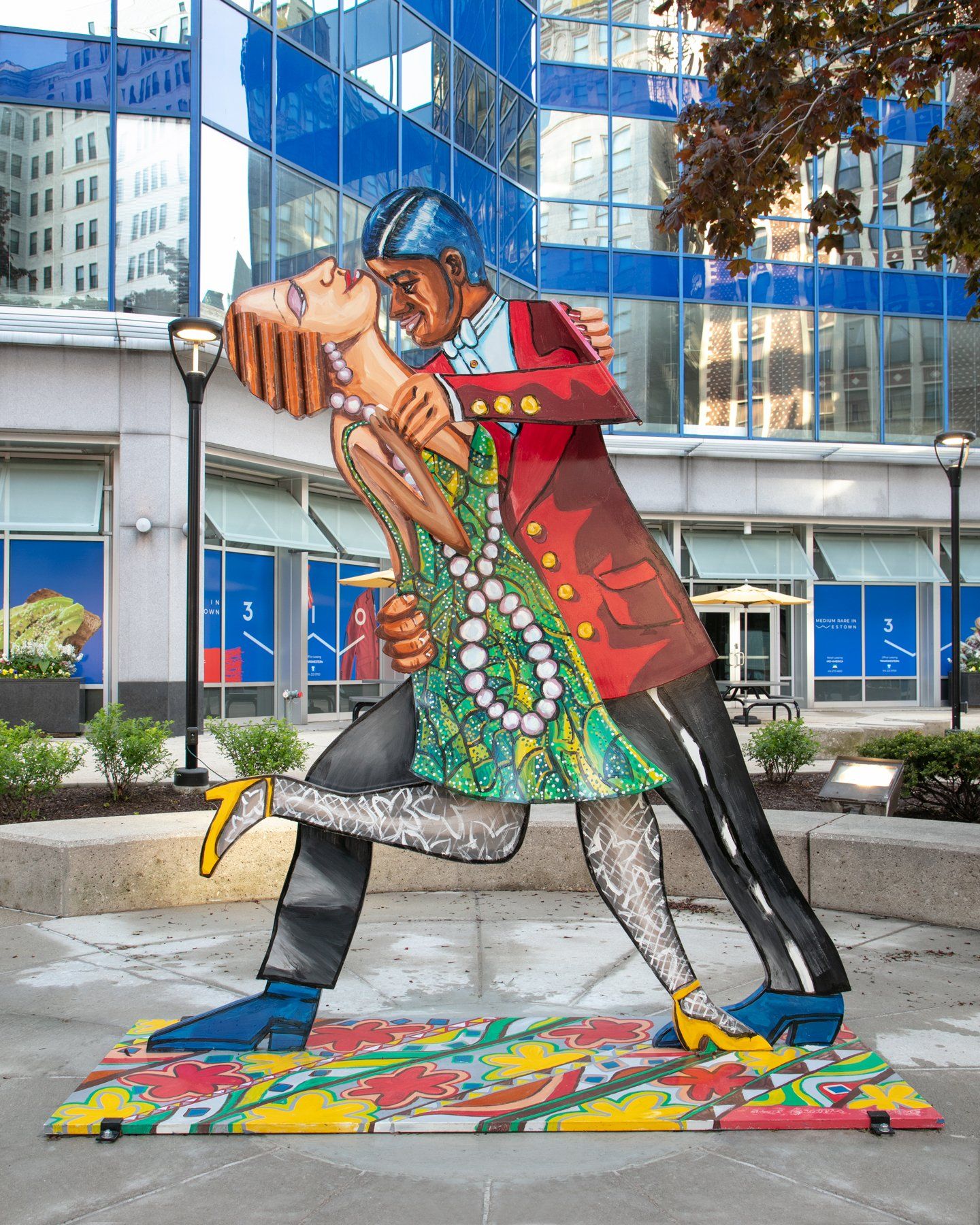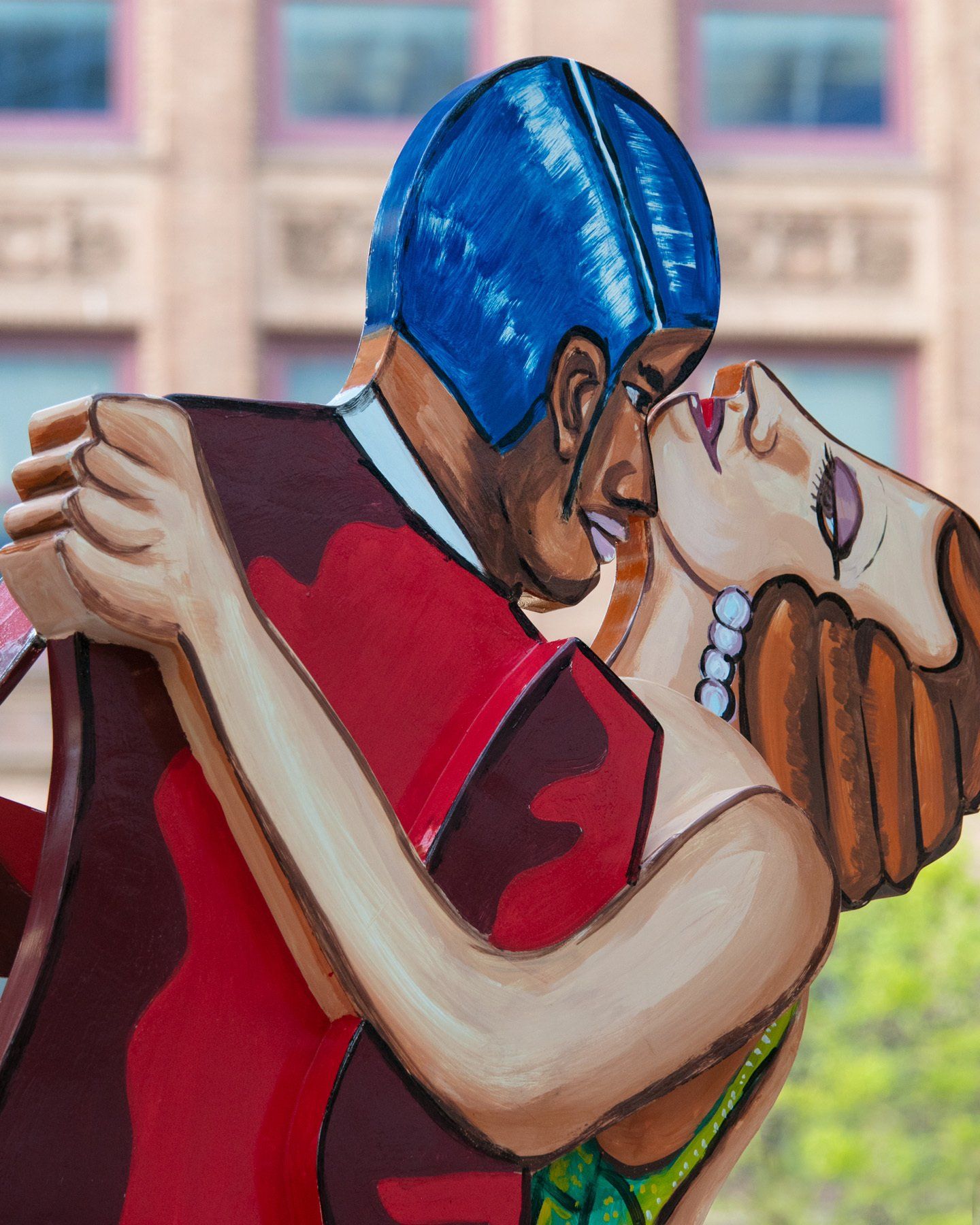Red Grooms | Tango Dancers
| 2005
Red Grooms | Tango Dancers
| 2005
enamel on aluminum | 109 x 96 x 38 inches
Courtesy the artist and Marlborough Gallery, New York
Red Grooms could be described as Pop Art Maximalist, creating environments with bawdy and baroque visual actors that reflect the day’s news.* He is a visual raconteur, scouring the streets for unique or daily events. His eclectic influences range from: carnivals, vaudeville and roadside attractions of 1930s and 40s America; Walt Disney, America’s premier purveyor of Main Street kitsch; and theater producer and visual artist Robert Wilson, known for his visually complex meditations on time and human movement, among others. This mash-up evokes distinct reactions in the art world, which often demands serious work. Just as comedies never win best picture Oscar, works with a sly sense of humor and trenchant sense of human fallibility are perceived as being kitsch, or too populist. Yet Grooms’ work is enormously popular and accessible; he is an “everyman’s” artist, one who chronicles the ups and downs of life.
Grooms was part of New York’s 1960s avante garde. His early Happenings were inspired by his high school football career, and with fellow artists like Claes Oldenburg, Grooms helped launch performance as a legitimate art form. Grooms founded a short-lived gallery in order to support his fellow artists, showing Oldenburg and Alex Katz in his first New York exhibition. Grooms ranged widely to create dynamic connections between his world and the larger world around him.
One of Groom’s major works, Ruckus Manhattan, 1975, designed with then-wife Mimi Gross, is one of Groom’s best-known “sculpto-pictoramas”.** Ruckus Manhattan
is a 10,000 square foot recreation of New York City, and recalls the scale model panorama of the five boroughs at the Queens Museum created for the 1964 World’s Fair, but with a few twists. While the Queens Museum panorama intended to show each building in the city, Groom and Gross’s Manhattan shows the precariousness of urban life, the flotsam and jetsam of the city, at a time when crime and financial ruin were a part of daily life.
His Tango Dancers
is an intimate portrait of a couple enjoying the sensual touch of dance, ignoring the peeping eyes of a busy city street.
He has created 14 public commissions; illustrated books and magazines; performed live and in films between 1958 and 1984; produced his own films between 1961 and 1985; and designed numerous theatrical sets between 1958 and 1992. There have been hundreds of articles and reviews written about his works, dating back to student work in 1952.
*The term Maximalist was coined by critic and art historian Robert Pincus Witten in his 1987 book Post Minimalism into Maximalism: American Art 1966-1986, describing a shift away from the stringent aesthetic ideology of Minimalism to allow for the hand-made and personal while retaining production in series.
1936
Born in Nashville
1955
Studied at School of the Art Institute of Chicago, USA
1956
Studied at George Peabody College for Teachers, Nashville, USA
1956
Studied at New School for Social Research, New York, USA
1957
Studied at Hans Hoffman School of Fine Arts, Provincetown, US
1956
Moved to New York
2019
Resides in New York
310 W. Wisconsin Ave.







